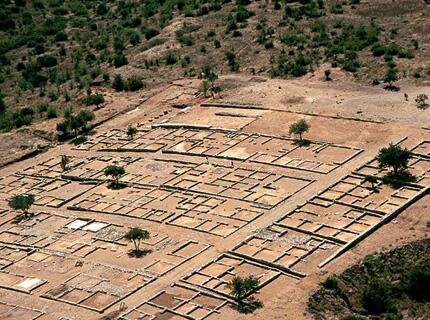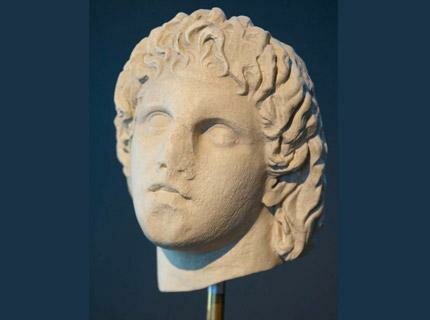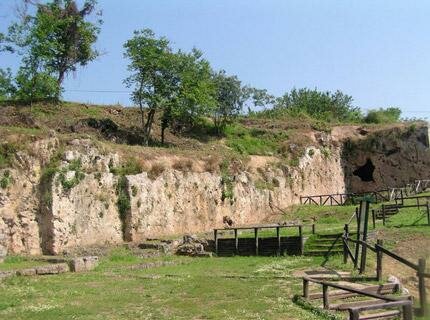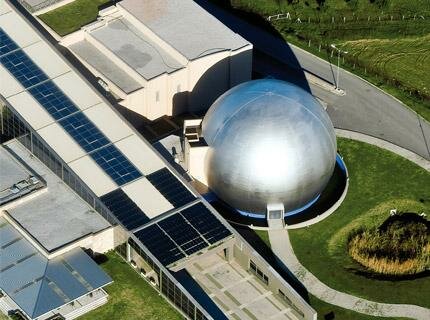⇠ Thessaloniki 70km ⇠ Polygyros 16km
Nea Olynthos lies next to the site of ancient Olynthos (+1.5km) and is the modern counterpart of the Byzantine village of Myriofyto. It is said to have taken its present name from its founder, Olynthos, brother of the Thracian king Rissos. Others claim the name comes from the hero Olynthos, son of the river god Strymon.
Sightseeing
• Ancient Olynthos. It was located on the heights east of the present village. The area is fenced and the entrance is at the southwest foot of the heights. The location of the city has been known since the 19th century. The people in the area called it “Pirgos” after a Byzantine tower that was build there to protect the “metochi” of the Mt Athos monastery of Kastamonitou. Only the foundation of this Tower is preserved today, at the southern end of the city. For 100 years Olynthos was the most important city of Halkidiki. Its foundation goes back to mythical times. The city was destroyed in 480 B.C. by the Persians. The evidence from the excavations show that the archaic city, which was a continuation of the prehistoric one, was built on the southern hill. The north hill seems to have been the area of the new settlement of the Chalkideans. The accuracy of the city plan of Olynthos helps us understand how the Ippodamio city planning system was applied. Although the ruins are remarkable, the findings of the excavations are exhibited at the Museums of Thessaloniki and Polygyros.• The ruins of the Byzantine church of St Nicholas, a structure of the 10th or 11th century.
• North of Olynthos, at the site known as Mariana, there is a fortified tower dating from the 14th century, built by the Docheiariou Monastery on Mt. Athos.
• About 7km from the village is the site of the ancient city of Mikyverna, the port of Olynthos, which must have been destroyed when Olynthos was laid waste by Phillip II in 348 B.C.
✓ can’t miss this!
Walk through the ancient roads of Olynthos and admire the perfection of the architecture.More about Ancient town Olynthos
The area was constantly inhabited since the Neolithic Age. According to mythology, the town was built by the brother of Olynthos, the son of the mythic King of Thrace, Strymonas. Olynthos was killed by a lion and his brother built the town to honour his brother’s name. However, the linguists insist that olynthos is the name of the wild fig tree, which is in abundance in the area, and the town was named after it.
Around 650 BC refugees from Pieria, hunted by the Macedonian army, settled in the area. The Persian army destroyed the town in 479 BC. and offered the region to their allies from Evia (Halkida). Later on, Olynthos joined the Athenian Alliance and then the Community of Halkida (Evia). From this alliance the town gained great profits (mainly financial). So, it became the capital of the Euboan colonies in Halkidiki and was able to support a huge army (about 20.000 soldiers). During the Peloponnesian War the area grew more, had its own monetary unit and provided protection to all the Euboan refugees in Greece.
When the Macedonian State faded, the army of Olynthos conquered its territories and reached the ancient town of Pella (389 BC). In 382 BC, after a three year-long siege, the Spartans captured the town and destroyed the Euboan Community. Nevertheless, the town quickly recovered and became wealthy and powerful again. In 348 BC the Macedonian Army, under the command of Philip II, conquered it and destroyed it. The town was never again inhabited and its destruction is remembered as one of the darkest moments of the entire ancient world.



